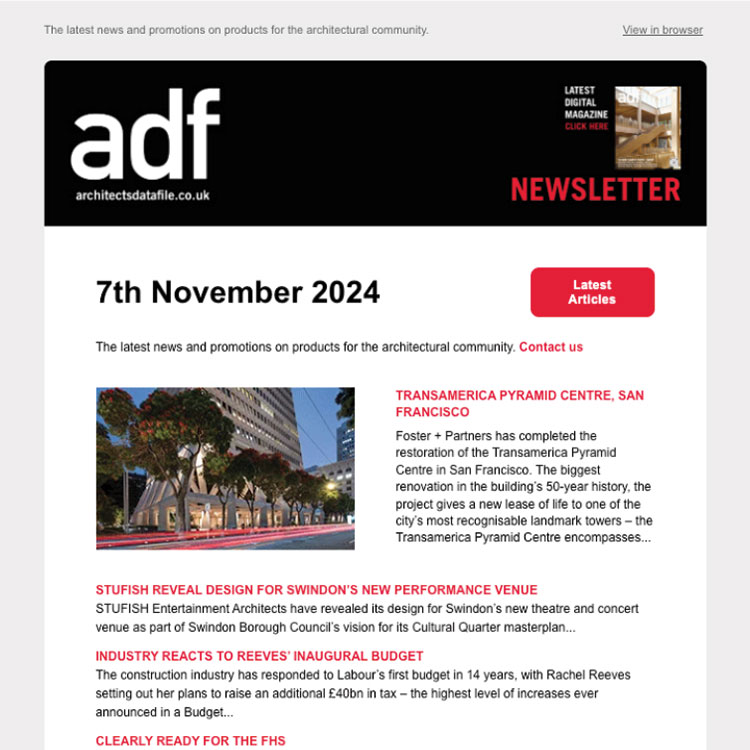As construction heads towards decarbonisation, choice of building materials is increasingly crucial. Andrew Carpenter of the Structural Timber Association (STA) outlines why timber provides built-in cost benefits.
Cost is one of the main considerations for architects and specifiers when choosing a building material. As building professionals are pressed to meet project budgets, opting for ‘traditional’ build materials like block and brick can be seen as short-sighted.
Structural timber frame has many often overlooked underlying but tangible commercial benefits such as speed of build, superior quality, and sustainability. A number of these benefits are associated with the predictable and consistent nature of building structural timber frame off-site, these being two of the most sought after virtues within the construction sector, helping ensure buildings are constructed in the most time efficient and cost effective manner, and typically at least 30 per cent quicker than ‘traditional’ methods of construction.
Enhanced control
As prefabricated structural timber frame is manufactured in a controlled and precise manner using the latest industry methods and technology, frames incorporate innovations such as vapour control layers to increase durability and advanced breathable membranes with thermal, acoustic and fire protection inbuilt into the timber design.
This level of automation also means structural timber produced off-site can be monitored at every stage of its construction and is not reliant on a multitude of other trades. Consequently, health and safety costs can be reduced as a factory-based environment ensures safer working conditions and fewer height risks for employees than on-site production. An indoor production setting is also not dependent on favourable weather conditions. This is a substantial cost benefit given the UK’s fluctuating climate – strong winds or heavy rain and sub zero conditions have no effect on workers or the manufacturing process, leading to safer, better quality and more efficient and timely production.
Furthermore, off-site construction helps ensure that architects’ plans are strictly adhered to, presenting the truest likeness to the original design. This means that there are fewer modifications to designs or unexpected financial costs. Additionally, timber’s plentiful supply helps to keep projects within predefined time remits and enables costs to be minimised. Timber is a readily available material that can easily meet industry demands whereas brick and block have recently suffered supply shortages which has resulted in a premium being placed on its price.
In addition, there is an alarming shortage of bricklayers within the UK construction sector, with a recent Royal Institute of Chartered Surveyors (RICS) survey revealing 60 per cent of respondents have difficulty in finding bricklayers for projects.
Reduced carbon
It is not just in the initial build phase that structural timber offers significant cost savings – the material’s inherent sustainability and structural performance allows forward-thinking architects to pass on cost savings to clients and users throughout the building’s lifetime. Choosing timber can also bridge the performance gap and cut carbon emissions – a significant benefit since according to a Committee on Climate Change (CCC) study, CO2 emissions from buildings make up a third of UK’s carbon footprint. Moreover, the energy used for construction of buildings constitutes approximately 15 per cent of the total energy usage, while heating and lighting during the building’s lifetime account for about 83 per cent.
By contrast, buildings made from structural timber provide low embodied energy frames that help minimise in-service energy requirements. Additionally, structural timber frame, with its swift construction and minimal waste, is extremely energy efficient.
With even stricter environmental requirements inevitably on the horizon, the choice of building material is an integral concern. Structural timber frame’s low heat conductivity, low embodied carbon, high structural strength, airtight construction and traceable supply chain make it an ideal choice for any contractors, specifiers and architects with sustainability and performance in mind.
Labour and material shortages, as well as a much-publicised housing crisis, have resulted in building professionals starting to shift their habitual mindset. The increasing sightings of structural timber frame across the construction industry, in projects both small and large, is testament to the commercial benefits of the building material.
Initiatives such as the STA Timber Frame Estimating Guide help to drive the message that structural timber frame is sustainable, energy efficient and an ultimately cost effective substitute to concrete or brick and block. With many industry barriers now falling and those within the construction sector beginning to question the monopolistic stranglehold of ‘traditional’ building materials, the choice of structural timber frame can deliver tangible benefits on an economic and social level, both inside and outside the confines of the sector.
Andrew Carpenter is chief executive of the Structural Timber Association.


